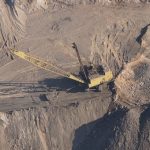
Zim’s cement market continues to show robust high single-digit growth, PPC says
By Almot Maqolo
PPC reported that group cement sales volumes for the five months that ended in August 2022 (including Zimbabwe) were in line with the prior comparable period due to robust demand growth in Rwanda offsetting weak demand in South Africa and the effects of a kiln shutdown due to maintenance in Zimbabwe.Analysts claim that capacity utilisation is high and the demand cycle is anticipated to improve given the policy focus on infrastructure and expectations of a pickup in housing, suggesting that the industry may now be on the road to recovery. As for financials, PPC noted that net debt was lowered from levels as of March 31, 2022, and cash generation remained positive.
“For the five months ended August 2022, PPC’s group revenues, excluding Zimbabwe, which is impacted by hyperinflation accounting, increased by 9%, driven by robust demand in Rwanda,” the group said.”The cement market in Zimbabwe continued to show robust high single-digit growth as a result of both residential construction and government-funded infrastructure projects,” PPC said.At the start of FY23, PPC Zimbabwe carried out planned maintenance; as a result, cement sales volume decreased by 7% period over period. However, PPC Zimbabwe’s return to clinker production at the end of May 2022 made it possible for sales volumes to increase in the second quarter of FY23. Price increases in US dollars of 5% were applied by PPC Zimbabwe in March 2022, 2% in April 2022, and a further 5% rise in August 2022. PPC observed that there was more foreign currency available in the Zimbabwean economy, with over 70% of cement sales during the assessment period being transacted in foreign currency.
PPC believes that a further dividend will be awarded following the release of PPC Zimbabwe’s interim results in November 2022. PPC received a dividend of US$4.4 million in June 2022. In their outlook, PPC said, “Given the current economic climate, the group will continue to enhance operational efficiencies to mitigate the impact of rising input cost inflation. Without a significant increase in infrastructure investments, cement demand in South Africa is anticipated to remain subdued.”PPC South Africa is well positioned to benefit from an increase in cement demand with additional capacity available to capture an upswing in demand without additional capex investment required.” PPC Zimbabwe predicts a turnaround for the remainder of the fiscal year, and CIMERWA’s prospects are still favorable.
Cement manufacturing is an extremely energy-intensive process, with clinker production alone accounting for more than 90% of the total energy used by the industry. However, during the clinker manufacturing process, surplus thermal energy is produced, which can be harvested and converted into power. Waste heat from the preheater and clinker-cooler exhausts can be recovered and used to provide low-temperature heating needs in the plant, or used to generate power.


